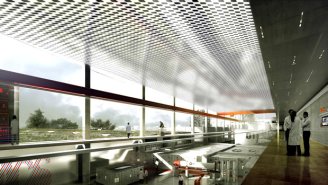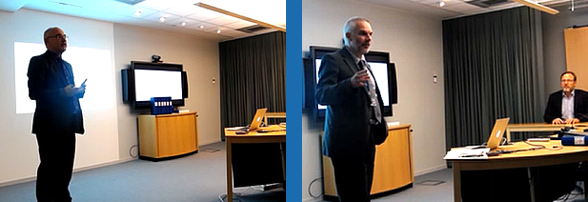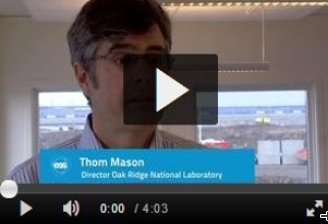Related News
Copyright 2012 neutronsources.org | All rights reserved. | Powered by FRM II | Imprint / Privacy Policy
From Soup to Nuts, First Operations Review Offers Glimpse of ESS as an Operating Facility
Operations Planning.Looking ahead to a time when the ESS facility is fully operational, 17 external experts provided essential input for baselining cost projections.
Date: 14/12/2016
Source: europeanspallationsource.se

LUND — The European Spallation Source ERIC (ESS) held it’s first Operations Review at ESS headquarters October 24-26. More than 50 presentations were made by ESS teams to the expert panels over two-and-a-half days. The primary focus was on so-called steady-state operations: the machine at full power, 22 instruments in service, and the facility operating a full user program.
The 17-member committee made a top-to-bottom review of requirements and key assumptions, long-term plans, and costs. The review results will serve as important input to ESS and stakeholders, including the Council’s Operations Working Group.
Quantitative Results an Essential First Step
“It is important for Council to know that there is adequate planning going on,” said Council Chair Lars Börjesson, addressing the group at the closeout session. Teams at ESS have been working over the last 10 months to define the entire range of operations activities for the facility.
“In the short term it is clear that the transition from construction into initial operations beginning in 2019 is essential to meeting both the construction project and long-term operations goals,” said ESS Director General John Womersley, who participated in the review the week prior to his official start at ESS. He thanked the review committee for being “quantitative” and told them, “This is not the last time we’re going to talk to you about these issues.”
The review committee was chaired by Thom Mason, director of Oak Ridge National Laboratory in the US, home to the Spallation Neutron Source (SNS), and included representatives from a range of ESS Partner institutions.
The panels reviewed planning for every aspect of facility operations: from maintenance costs, staffing levels and spare parts necessary to keep the Accelerator, Target and Instruments operating to very high standards of reliability, to such relative minutiae as how many security guards are necessary, who will man the after-hours IT helpline, and more efficient ways to operate a cafeteria.
‘ESS Project has Reached a Point of Maturity’
“The first impression is it’s exciting to see how far things have come,” said Mason, who has been involved with ESS for nearly two decades, both in the early planning phases and as a member of the site-selection committee that ultimately chose Lund. “To see it full-up into construction and now at a phase where people are thinking about the operations is exciting.”

Mason and the committee panels concluded in the review’s closeout session that, “The ESS Project has reached a point of maturity in its design and staffing where a more comprehensive, bottoms-up, analysis of the resources needed to support steady-state operations is possible.”
Thorough Benchmarking Key
The committee went on to complement the teams on their preparation and the extensive benchmarking that was done against comparable facilities, both stand-alone European facilities like the European Synchrotron Radiation Facility and the Institute Laue-Langevin in Grenoble, as well as against those with a similar technical scope, including SNS, ISIS in the UK, and the Paul Scherer Institute in Switzerland.
“This was a difficult request we made to the committee and the ESS teams,” noted ESS Head of Operations Planning Dimitri Argyriou, who initiated the review. “To go back to the future and then come back again and tell us what happened. It is an important tool to start discussions with funding agencies as to what is needed to make ESS the success we all want it to be.”
Downloads:



